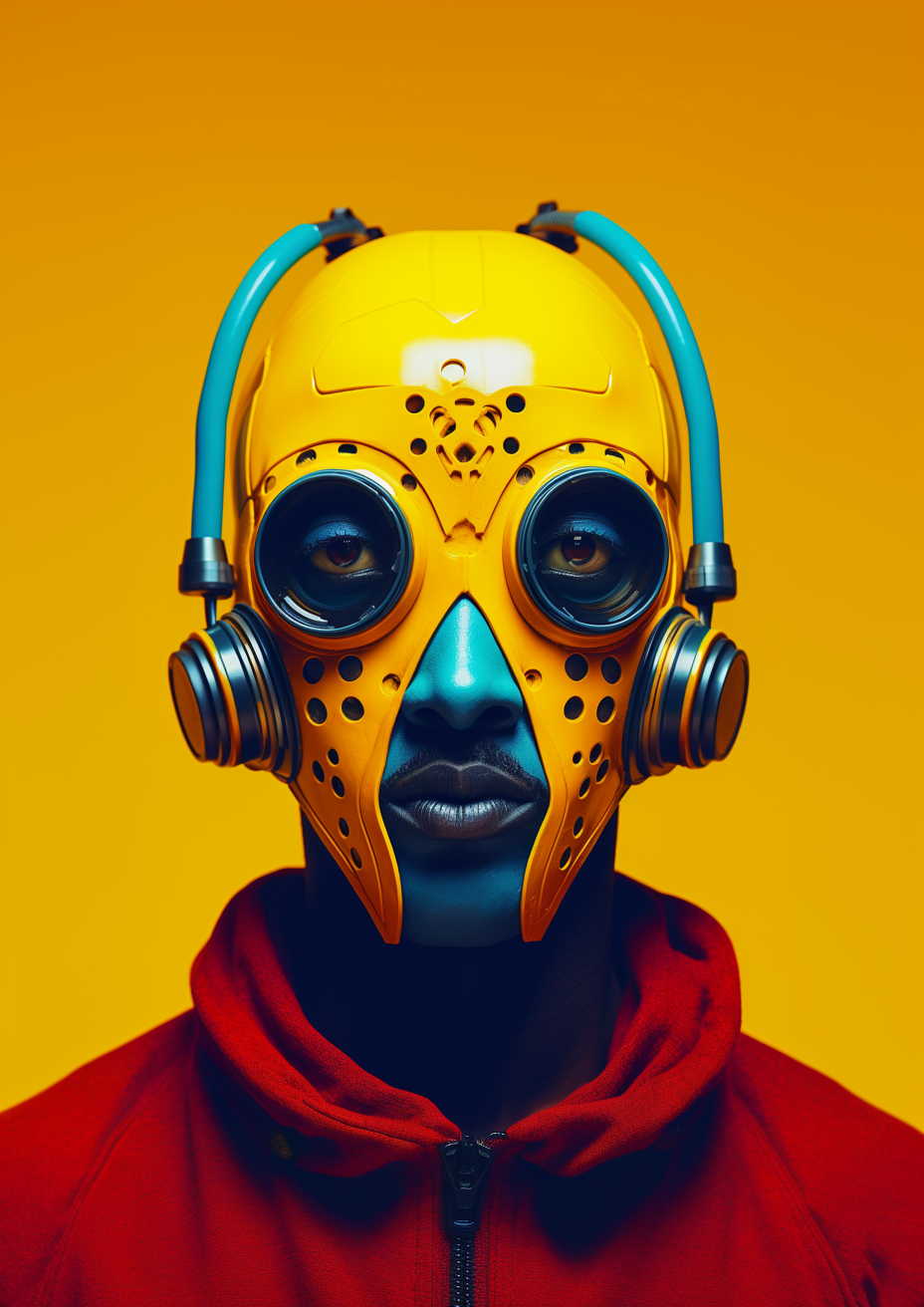At the intersection of Afrofuturism and traditional African art, we find a profound reimagining of the African mask, a cultural artifact steeped in history and spirituality. This post explores how the time-honored tradition of African masks, exemplified by masterpieces such as the Chokwe Mask and the Kuba Masquerade, is being transformed in the digital age, creating a new narrative that resonates with the ethos of Afrofuturism.
Traditional African mask
The traditional African mask, such as the Chokwe Mask from the early 19th–early 20th century, crafted from wood, vegetable fiber, glass beads, and metal, is a testament to the intricate artistry and deep spiritual significance of African cultural practices. These masks were not just artistic creations; they were conduits for transformation, enabling the wearer to connect with the spiritual realm, influencing and thanking the spirits. The Western viewer, often unacquainted with the cultural context, can be deeply moved by the emotive power of these masks, which transcend their aesthetic beauty.
In contrast, the Afrofuturistic approach to mask-making retains this spiritual and transformative essence while infusing it with technological and futuristic themes. For instance, imagine a mask inspired by the Komo Helmut Mask, traditionally made from wood, bird skull, quills, horns, cotton, and sacrificial materials, now re-envisioned with elements like holographic imagery or LED lights. This modern interpretation not only pays homage to the original mask’s role in harnessing untamed natural forces but also symbolizes the harnessing of technological power in contemporary African societies.
The role of masks in rituals and ceremonies, such as those performed by various African tribes like the Bwa, Mossi, and Nuna of Burkina Faso or the Yoruba and Igbo of Nigeria, highlights their importance in social and spiritual life. These masks, often used in initiation rites, fertility ceremonies, and other pivotal community events, are not just art pieces but vital elements of performance art, connecting the human and spirit worlds.
Afrofuturistic masks
Afrofuturistic masks, therefore, are more than mere reinterpretations of traditional forms; they are a bold statement about the future of African cultural identity. These masks, like those envisioned by contemporary African artists such as Romuald Hazoumè and Ngima Thogo, transform the traditional into the modern, using materials and themes that speak to current and future African experiences. Hazoume’s use of repurposed materials, such as fuel canisters, to create masks that critique and comment on contemporary issues, and Thogo’s digital art that blends photography with digitalized masks, exemplify this transformative approach.
Further exemplifying the innovative spirit of Afrofuturistic mask-making, Thogo, a self-taught digital artist from Nairobi, Kenya creates art that is a captivating fusion of traditional African face masks and skin scarification, reimagined through a digital lens. His art features human characters whose faces are obscured by masks, creating a mysterious and enigmatic aura. These ‘faceless’ figures, devoid of definitive facial expressions, communicate through body language, opening a broader spectrum for interpretation and emotional connection. This aspect of Thogo’s work reflects the transformative power of masks, not just as cultural artifacts but as mediums of profound emotional and spiritual expression.
In this Afrofuturistic vision, the African mask becomes a symbol of a future where tradition and modernity coexist and enhance each other. It’s a future where the rich heritage of African art continues to evolve, embracing new mediums and messages while retaining its profound connection to the past. Through these masks, we see a celebration of African resilience, creativity, and the unyielding spirit of innovation, pointing towards a future as rich and diverse as the continent’s history.
